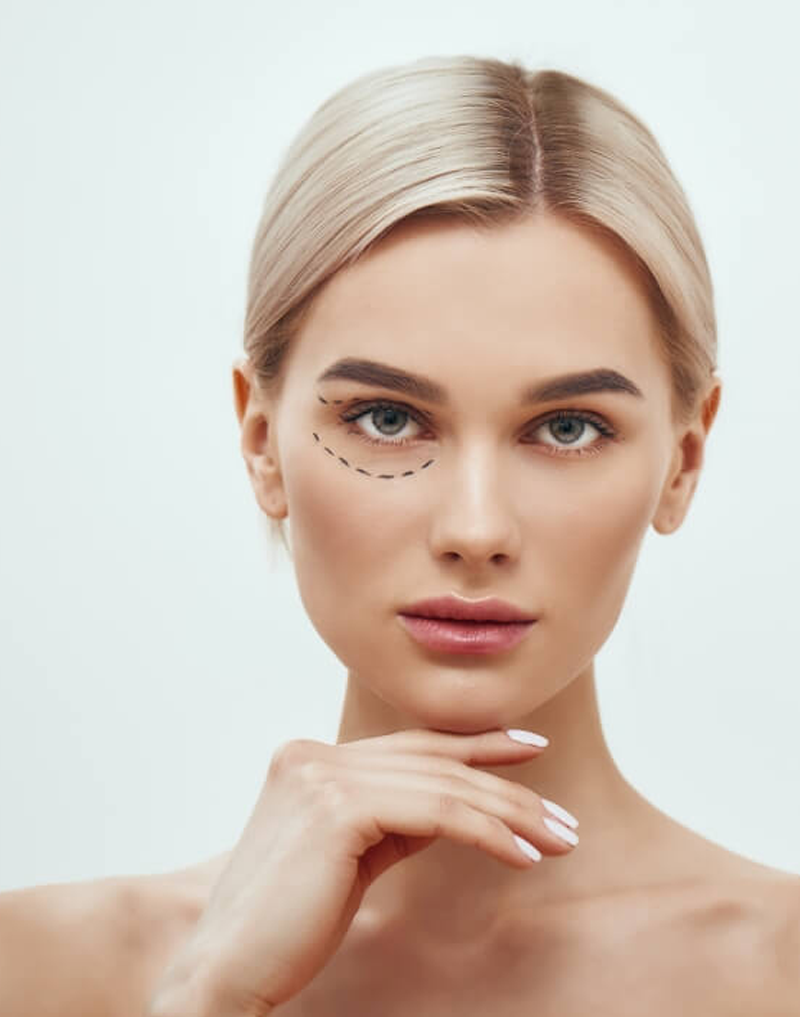Some deformities or malformations occur in the lower and upper eyelids due to loss of elastic fibre. Another reason for deformities or malformations of the eyelids relates to the fat deposits bulging around the eyes with age, similar to a hernia. The eyes are the visual focal point of the face and should be precisely and carefully examined before medical procedures for rejuvenation attempts. The goal of brepharoplasty is to give the upper and lower eyelids an increasingly youthful appearance without compromising their natural appearance and shape. Ageing causes deformities/deformities in skin, muscle, fat, bone and ligament cracks. It should be kept in mind that there are various surgical techniques to choose from depending on the patient's current needs, i.e. depending on the surgeon's preference, some influencing variables and factors for patients are taken into account when determining the appropriate application. For example, with signs of age around the eyes such as tear troughs or bags under the eyes, a special procedure should be performed.
Although the focus of blepharoplasty is the deformities in the eyelids, an assessment and treatment of the entire periorbital region is required. The goals of upper eyelid lift are to protect, fix, elevate the eyebrows and restore fullness and freshness to the upper eyelid. Drooping eyebrow and eyelid wrinkles or ptosis are ideally corrected during blepharoplasty surgery. In lower blepharoplasty, the main aim is to create a softer transition area between the lower eyelid and the cheek. Drooping cheeks and/or cheek area that has slipped downwards can be in need of treatment. Prior to blepharoplasty, all patients are required to have their visual acuity measured, eye movements assessed and standard photographs taken. In addition to sedation, the procedure is performed either under local or general anaesthesia. After the operation, drops and eye ointments are used.
As an aftercare measure, the head is raised above the horizontal plane ("elevation") and the treated areas are regularly cooled with gel cool packs or ice packs. The eyelids are the areas where the age-related changes in facial anatomy are most pronounced and obvious. Such changes can sometimes be aesthetic and sometimes functional deformities, such as lowered eyebrows, bags or crow's feet around the eyes. In the past, eyelid surgery was considered only as eyelid correction and therefore corrective procedures were performed. In the following years, however, it has been scientifically established that the changes in the eyelids are due to other disorders in the facial area. Therefore, these are performed together with aesthetic surgeries on other facial regions.
For example, we fill the dimples created by the downward slipping fat pads that make up the bags under the eyes by lifting the fatty tissue upwards and creating a tight, smooth facial skin from the cheekbones to the lower eyelids. If there is a severe drooping of the upper eyelids, it is essential that we correct it with other eyelid surgery for aesthetic purposes. If excessive drooping occurs in the forehead area during upper eyelid lifting or if the forehead and eyebrows (droop) towards the eye, these are first corrected with a temporal lift (temple lift) and then eyelid aesthetics are performed. In the case of eyelid surgery performed without correcting the deformities in other parts of the face, the aesthetic restoration takes less time but the aesthetic deformity reappears.
